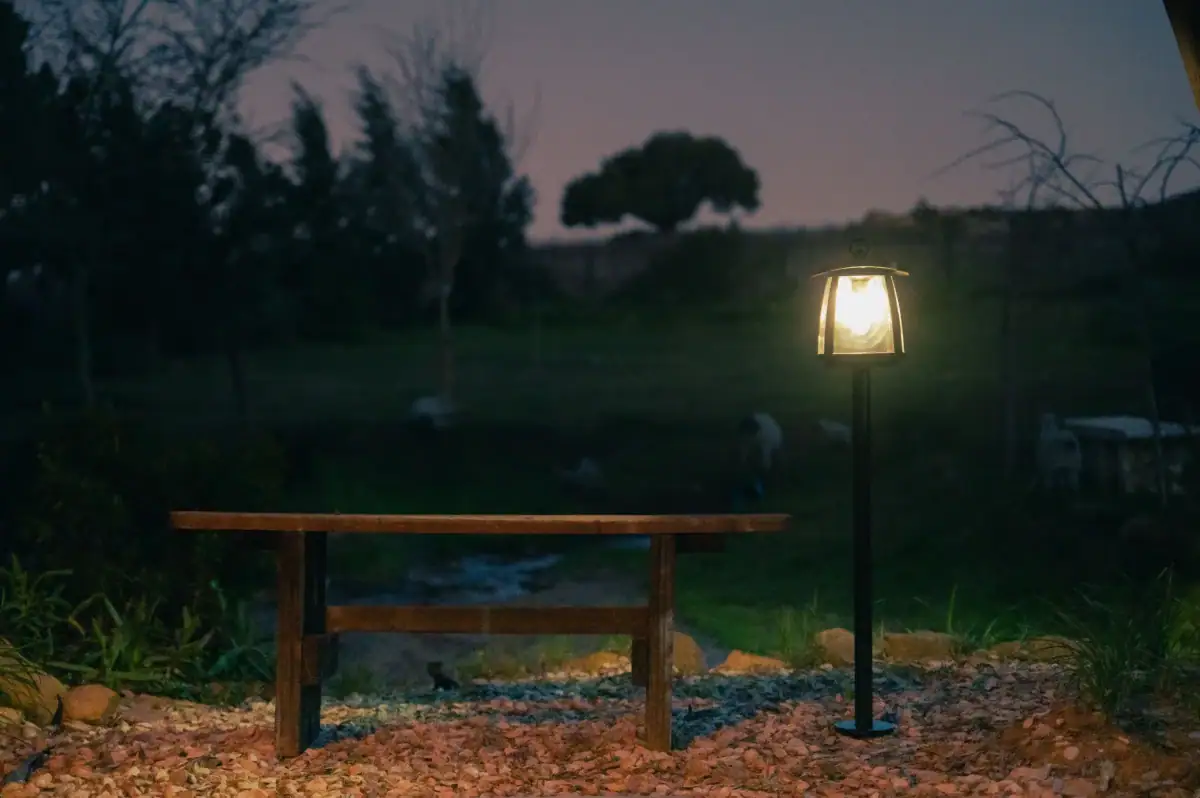Solar landscape lighting has become a significantly in-demand alternative to wired, mains grid-reliant lights, especially for developers and contractors designing modern, hyper-efficient, sustainable parks and public spaces.
The appetite for low-carbon, renewable energy over fossil fuels isn’t just about meeting social expectations. It’s also based on the recognition of how advanced solar outdoor lighting is considerably cheaper to run over the long term and can make outdoor spaces safer and more inclusive without the prohibitively high costs of installing hard-wired lighting.
SoLight has collaborated with numerous community designers and township committees to compare the pros and cons of solar lighting products vs conventional alternatives – many of whom find that the balance between usability, cost-efficiency, and longevity makes this an easy decision!
The Key Benefits of Solar Landscape Lighting in Natural Spaces
Solar lighting has evolved in recent years. Gone are the days when a solar lighting model might have had a limited lifespan, low-level illuminations, and a minimal-capacity battery that couldn’t meet the needs of a lighting system in a public environment.
Today, the advanced technologies incorporated into landscape lighting include automated step-down lighting to preserve battery charges, customisable programming to pick the most appropriate settings, and accredited materials and casings that can last over a decade, even in harsh weather conditions.
The benefits of using solar lights to create welcoming, well-lit spaces are compelling:
- Protecting natural ecosystems and wildlife without digging trenches to lay cables, disrupting tree roots or introducing the glare of mains lighting where this isn’t necessary.
- Creating healthy, environmentally friendly urban infrastructure and helping cities and towns meet their sustainability objectives by switching to green, clean solar power.
- Long-term cost savings. While high-performance solar lighting systems are sometimes perceived as expensive, they repay their initial outlay multiple times over, with zero electricity costs, little maintenance, and a massive reduction in overheads.
- Reduced carbon outputs, which contribute to regional and national targets to cut carbon footprints and achieve sustainability goals, both of which are political and social priorities in many areas.
Importantly, and especially in South African regions with regular power outages and load shedding, solar-powered outdoor lights augment energy resilience and independence.
They function autonomously with no reliance on the national grid, which means a play space, parking area, parkland, or nature reserve won’t be thrown into darkness each time the mains power fails. This can be particularly relevant for planners creating lit paths, access routes and entrances to safeguard the well-being of residents or who need to highlight trip, fall and water hazards.
How Solar Lighting Makes Parks and Recreational Areas Cheaper to Run
We mentioned briefly the cost savings associated with sustainable solar street lights and landscape lighting solutions. While cost reductions are one of the most sought-after benefits, the efficiencies of solar lighting go beyond lower electricity bills.
A large proportion of infrastructure planners are looking for innovative ways to reduce the costs of mains power and lower their reliance on fossil fuels, as well as to minimise the logistical costs of keeping public spaces safe.
Solar landscape lighting, engineered with weather-resistant and accredited waterproof aluminium casings, offer:
- Reduced maintenance outlays without the need for regular bulb replacements and engineer visits to verify that wiring cables and power points remain in good condition without wear, tear or damage.
- Lower installation costs, with solar lighting systems ready to install, and available with robust, pole-mounted and tamper-proof fittings to ensure they are not vulnerable to vandalism or theft.
- Scalability, with many clients opting to install solar lights in a staggered way. Unlike alternative lighting options, there is no cost uplift involved in transitioning the switch to green power. That means clients can either replace current lighting systems as they approach the end of their useful lives or introduce solar lighting into new spaces as they are developed.
Flexible implementation can offer dramatic efficiency savings, supporting phased switches to green energy that help city managers and developers meet their sustainability targets without any compromise in trying to stretch their annual or quarterly budgets to complete a new lighting installation in one go.
Using Solar Outdoor Lighting to Minimise Carbon Outputs and Comply With Evolving Energy Efficiency Regulations
Nationally, South Africa has committed to lowering the production of greenhouse gas emissions and hitting net zero by 2050, which has put a strain on planners, housebuilders and civil engineers who need to ensure they are meeting contracted conditions around renewable energy.
We all know that solar lighting plays an important role in cutting back on carbon emissions, with a substantial contrast between grid-powered lighting. This means cities and townships can immediately begin to cut down on their emissions and contribute to climate action objectives.
It’s also essential that developers and political leaders understand the demand for environmental responsibility from the communities they serve, improving public perceptions by visibly and actively showcasing how they are becoming more sustainable and aligning infrastructure facilities with the well-being of residents, wildlife and local landscapes.
Creating a Customised Solar Landscape Lighting Solution
SoLight is proud to be a leader in advanced and dynamic solar lighting solutions, turning parks, outdoor spaces, walkways, and play areas into sustainable sites that make the most of solar technology.
There are countless ways to consider using solar power alongside lighting. They range from designing solar-powered charging stations to installing gentle illuminations along walking routes and fitting brighter solar lights in areas with higher-than-average crime rates or where car parking facilities would benefit from stronger lighting during the hours of darkness.
We are always on hand to provide advice and input to assist with urban planning and solar transition projects. We have expertise working with clients who recognise the need to commit to environmental standards while appreciating the practical importance of managing budgets and timeframes.
Should you be interested in independent recommendations about the best solar landscaping models for your space or design, need to compare the costs and installation requirements for the outdoor lighting units within our ranges, or wish to understand more about maintaining solar lights for longevity, you are welcome to get in touch.





